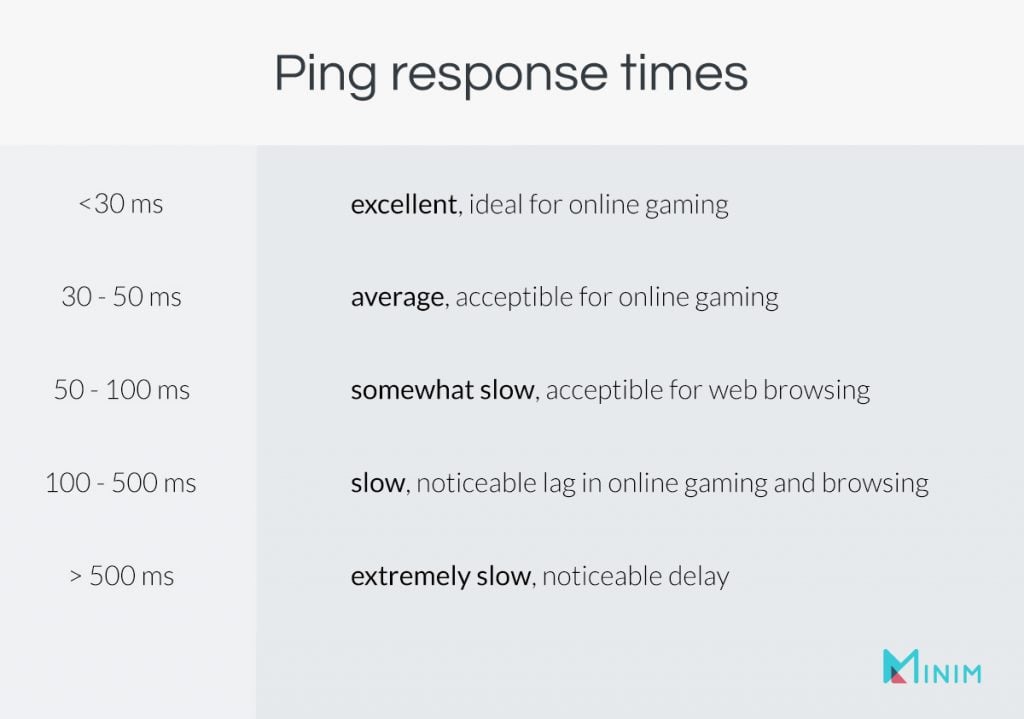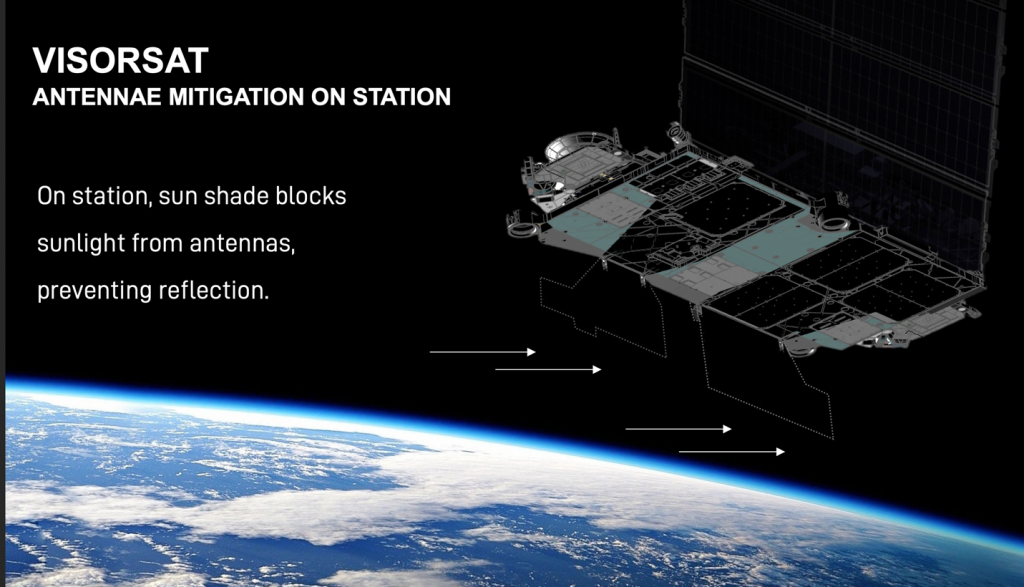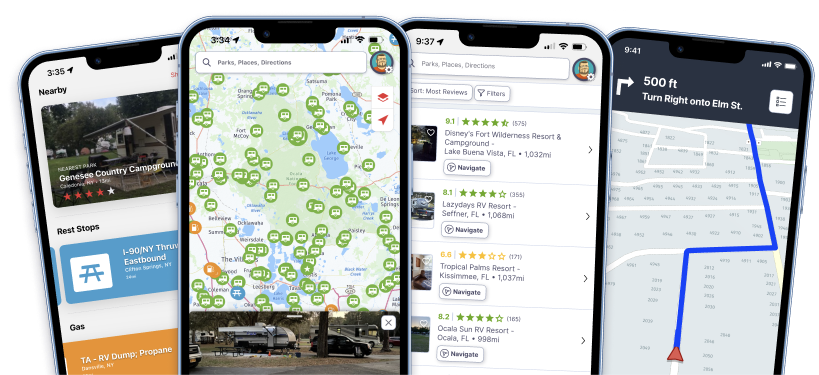
What to Do When You Need Internet While RVing
Along with making Starlink internet a reality, Elon Musk’s company SpaceX has accomplished some pretty neat things in recent years. It developed the technology to reuse the first stage of rockets allowing for cheaper space flight. SpaceX also sent astronauts to the International Space Station from American soil for the first time in years.
If you have never seen a SpaceX rocket re-enter the Earth’s atmosphere and land perfectly upright on a drone ship, then you don’t know what you’re missing. The video below shows the two side boosters of the SpaceX Falcon Heavy landing. It’s 4 minutes of crazy good engineering gold.
Starlink Internet: What Is It and How RVers Benefit
With cheaper space flight comes cheaper satellite launches. Starlink internet was announced by SpaceX in 2015 and would not be given the name Starlink until 2017. The idea was to have a constellation of many small satellites in low Earth orbit to provide global broadband internet.
Satellite internet isn’t new. But it has a reputation of being slow and prohibitively expensive, especially for RVers. Starlink internet, however, is quite different from traditional satellite internet in several ways.
Lower Orbit
Starlink internet satellites are in a lower orbital plane than current satellites used for the internet. In other words, they are closer to the earth by quite a bit.
Traditional geostationary communication satellites are located about 22,000 miles above the Earth, while Starlink internet satellites sit at about 340 miles. The satellites’ lower orbit provides two advantages. The first one is decreased latency.
Latency
Latency is the time it takes to get a response. Imagine typing RVLife.com into your browser. You hit the Enter key and what happens?
In traditional satellite internet, your receiver sends a signal 23,000 miles to the satellite. The satellite sends that signal 23,000 miles to the physical location on the ground that provides your internet. Once that site gets the data you need, it is sent on another 46,000-mile trip back to you.
It takes time for all of those waves of light to travel 90,000 miles plus. On average, that time is about 550 to 650 milliseconds. Less than a second doesn’t sound that long, and to be honest, for basic browsing and email, 550 milliseconds is good enough. Consider, though, the higher price you are paying for satellite when cheaper ground-based internet is typically less than 100 milliseconds.
Many games like online first-person shooters are unplayable with a latency of over 100 milliseconds. Gamers are not typically associated with RVers. However, more gamers are entering the RV world as the Nintendo generation approaches their 40s. So it is getting to the point that being able to get a little gaming time in while camping is a luxury that many RVers will want to have. Other than games, latency can have negative impacts on streaming and things like video calls.
Since Starlink internet satellites are only about 340 miles above the Earth, they have much lower latency. In addition to being closer, each satellite is equipped with lasers to send information to neighboring Starlink satellites, resulting in quicker response times.
As more Starlink satellites are brought online, it will only improve. On February 22nd, 2021, Elon Musk said, “…latency will drop to ~20ms later this year.”
For a very detailed explanation of how Starlink internet accomplishes its low latency, check out the video below.
Self-removing space junk
The second advantage that the low Earth orbit grants Starlink internet is its ability to clean itself up. Unlike satellites in higher orbital planes, Starlink internet satellites will not stay in orbit hundreds of years after beyond their useful life.
This may not be a huge deal to many in the RV community at this moment in time. Still, space junk is an issue, especially if we want to continue to send missions to space. There is already a lot of space debris posing problems for working satellites, the space station, and other missions.
Starlink internet is attempting to tackle this problem by using an ion engine on the satellite to automatically avoid colliding with existing space junk and deorbit the satellites at the end of their life. Most of the satellite burns up upon reentry of the earth’s atmosphere.
Starlink is also making efforts to keep its satellites as dark as possible so they don’t interfere with Earth-based astronomy. There are several things they are attempting to prevent them from being seen and reducing their brightness, such as sun shades.
More bandwidth and speed
Along with lower latency, Starlink internet is faster than traditional satellite internet. This has to do with its ground infrastructure and the number of satellites. Because it is a cluster of satellites, Starlink internet can offer much better bandwidth because more nodes can handle the traffic.
Think of the internet service as a pipe. The bandwidth is a measurement of the size of the pipe. The pipe can only carry as much water as it can physically fit at one time. If you try pushing more than that, you are just going to have to wait until there is room.
All internet services are the same way. They can only handle so much data at once. If you have many people trying to do things at once, someone will have to wait. That is why RVers who want to try out satellite internet when they are boondocking are hit with data caps and slower speeds.
Does Starlink for RVers Have Data Caps?
A data cap is a limit to how much data you are allowed to transfer in a month before your speeds are significantly reduced or you get charged. Data caps are put in place because there is a limited amount of bandwidth available in the network. Companies put data caps in place to force users to be conscious about how much data they are using. That way, one person can’t hog up all the bandwidth.
Available bandwidth and latency work together to keep traditional satellite internet speed to between 25Mbps and 100Mbps. Some users experience slower speeds than that at times. While this is within the speeds needed for gaming and streaming for one person, the modern-day camping family may require more than that.
By creating small and easily replaceable satellites in low earth orbit, Starlink internet has very scalable bandwidth. In other words, as its userbase grows, so too can Starlink internet.
Users of the service are already experiencing speeds of over 100-150Mbps. In the same tweet referred to earlier, Elon Musk said, “Speed will double to ~300Mb/s in 2021.” At this time, Starlink internet does not have data caps either. So you are free to use as much data as you please.
The hardware
Starlink comes with the dish, router, and wires needed to set it up right out of the box. A handy app walks you through the process of getting it all setup.
Starlink internet cost
Right now, the Starlink internet beta testing phase requires users to purchase the hardware for $499, and the service itself costs $99 a month. That’s not bad considering residential satellite plans charge up to $150 a month for unlimited internet up to 25Mbps. Current mobile RV satellite internet services cost upwards of $400 a month for their 2Mbps plan.
What does this mean for RVers?
I know what you’re thinking. Can RVers get this decently-priced, high speed, low latency, satellite internet with them on the road? The answer is yes! Well, no. Not yet, but maybe soon!
Starlink internet is not mobile yet. Or to quote their FAQ page,
“Can I travel with Starlink, or move it to a different address? Starlink satellites are scheduled to send the internet down to all users within a designated area on the ground. This designated area is referred to as a cell.
Your Starlink is assigned to a single cell. If you move your Starlink outside of its assigned cell, a satellite will not be scheduled to serve your Starlink and you will not receive internet. This is constrained by geometry and is not arbitrary geofencing.”
In other words, Starlink internet is only mobile in your immediate area. When you sign up for service, your dish is given the information to connect with the best satellites for your address or location.
Every Starlink dish in that area/cell will connect to those satellites. As long as you remain in that cell, you can connect. So you may be able to take your dish on a camping trip close to your house as long as the area happens to be in the same cell as your service address.
The future of Starlink
So why devote the effort to talk about it in an RV LIFE article? Because Starlink internet knows RVers are keeping a hopeful eye on it.
Like any business, they know that RVs, trucks, boats, and planes are a prime revenue stream. A Camper Report article added an update about how Starlink recently filed with the FCC seeking a blanket license authorizing its ESIMs or Earth Stations in Motion operation.
Unlike their current offering intended to be stationary, the ESIMs, though electrically identical to its current earth systems, will be mounted to moving vehicles such as boats, planes, trucks, and yes, RVs too.
Starlink internet will allow their vehicle-mounted dishes to be moved from one cell to another and maintain connectivity while traveling. That means you will have the internet in your RV at the campsite and while traveling as well.
Unlike their self-setup dishes for residential use, the filing states that the mobile version will have to be installed by a qualified technician. Once installed, you will be able to connect to satellite WiFi on the road and off, provided you have the power to keep it running.
The Downside of Starlink Internet for RVers
That should be no problem for RV park camping, but boondockers might have to conserve power in some other places if they want internet all day. The current dish hardware requires about 100 watts, which is quite a power hog. Hopefully, the team optimizes it a bit for the mobile version. As far as when Starlink internet for RVs will be available, Starlink hasn’t said.
SpaceX Director of Satellite Policy David Goldman wrote, “No longer are users willing to forego connectivity while on the move, whether driving a truck across the country, moving a freighter from Europe to a U.S. port, or while on a domestic or international flight.”
For years, RVers have dealt with poor park WiFi, spotty cell phone internet, and prohibitively expensive satellite options. One of the most popular questions new RVers have is how they can get the internet on the road.
RVers have installed cell boosters that work but don’t consistently deliver the speeds that they need. It is a never-ending battle for those who travel in their RV. The good news is the solution to RV internet could be coming soon.
Learn more about Starlink Internet from Do It Yourself RV and Camper Smarts





I clicked on the article to get more information on satellite tv and all i got was a long winded, overrated article about nothing that concerns us. I am no further ahead on info about satelite tv for my rv?
You must not have read the headline. It is about internet access not TV. With a good internet connection you can stream a lot of TV content.
Hi there.
I’d like to know if you have updated Starlink information as on June 2022. I need it for a moving & sometimes stationary RV.
Otherwise I will consider ATT my actual cellphone company.
Thanks so much.
The StarLink “cell” is a 22km “hexagonal shape
Not sure that price is a bargain as I have a 25 mb service from ATT for $50mo. Also once they realize the cost of maintaining all those satellites the price may go up.
OR PRICE WILL GO DOWN–ACCORDING TO MUSK.
This has already been disproven. When I signed up for the beta, starlink was talking about realizing 500 mbit speeds in 2022. They missed the fall 2021 release in my area and then unveiled a staggering bait-and-switch of “pro” service for $500 A MONTH promising 500 mbit speeds. I canceled immediately.
Prices just went up to 110 a month and instead of 499 to 599
the thing is, will att give you internet service in remote areas where there is NO cell service and no internet? I supposed your answer is no, but with starlink, that is a big fat YES! Cheers!
Thanks for the comment. I’m glad your current plan works well for your travels. It is definitely important to find the best plan for you. Starlink would be good for those that frequently travel and camp outside coverage areas, or require a fast internet connection, say, in the middle of the desert. If you currently travel and RV in places that have good ATT coverage, then ATT is probably the best choice for you.
Good news- I’m sure the next phase will bring us connectivity wherever we go. Thanks Starlink!
OK SOUNDS GOOD on the surface
available when
cost
ok for part time use only
ease of installation
tons of equipment needed
This isn’t any bargain. And limiting it’s area of connection makes almost worthless to an active RV’er. NO other Satellite Internet company has such a restriction. So, I’ll stay with what I have until they can compete on the same level. Besides, my connection is cheaper too.
Ray, what do you have? I am looking into internet for my RV and don’t know where to even begin.
Cannot wait! 🙂
Don’t need it at all. We rarely have any problem with our cell phone service and with unlimited data, we use it for our Streaming TV. Nope, you can keep it.
What phone service do you have that has real unlimited data? That’s what I need!
Thanks for the info. I was totally unaware that it is not mobile yet. I had paid my $99 to sign up wit hopes of using it for a long RV trip in September. Just canceled Starlink. Maybe later it will be mobile.
I would sign up for this service immediately if available.
AVAILABILITY???
COST???
1 TIME OR MONTHLY??
EASE OF INSTALALTION??
SUPPORT BASE??
Is available in some areas, but in the case of one of my rural friends, they won’t have any additional connections until 2023 for the cell he’s associated with.
I’ve had it since Oct 2020.
Costs have gone up to 110/mo and a one time equipment charge of $599.
It takes longer to run the cable and set the antenna out than it does to “install” it.
It takes less than 5 minutes from power on to internet connenction. (all you have to do is set the name (SSID) and the password for wireless connections. I had problems with mine when I moved the cable and they had ordered me a new setup to be sent. With their help we further diagnosed the problem and I fixed it myself, so no need for a replacement system. (I’m and IT professional with 45+ years of experience).
P.S. – I moved my business to my home and Starlink is faster than the Spectrum I had in my business office.
Levi
Thank you very much, very useful information!
I hope RV manufacturers will also take notice 🙂
Maurizio
When Starlink goes mobile, I will be the first in line to purchase. We are full-timers and although we are based in the South, Lower Alabama (LA) for the winter months, we travel the remaining 6-7 months a year.
Much of our travel includes working as a First Responder following the Catastrophic events throughout the nation. This past year has taken us on the road for 8 months straight.
I have heard of Starlink from our neighbor from Wisconsin. He purchased this for his cabin at home and has nothing but great things to say about the service.
Please keep me informed as to when this is available to go mobile. I’d be happy to support a Beta version.
Thanks,
Pat
Cnet tested Starlink. Good results. But tester Kim had a few days outage. According to Kim, “I checked the Starlink subreddit, and it seemed like a wider issue affecting customers in multiple regions. My internet connection kept dropping out to a point where it was unusable. It took about four days for the outage to clear in my case, and when it did, Starlink worked flawlessly. My average download speeds hovered at around 78Mbps at a latency of 36ms.” Good service but maybe subscribing would not be the best idea at this time.
https://is.gd/BS60ma
Just bought the Pepwave MAX Transit back in December as we’ve been preparing for this adventure from WA to WV and we’ve finally landed in a RV campground… We’ve had a constant connection with AT&T with a business account, sometimes yes it gets spotty here and there like in a lot of the valleys or even in North Dakota when we went through there. I for one know I’ll be snagging up this for the RV and our most recent property purchase (close on May 4th) here in West Virginia (This state is BEAUTIFUL and so are the people!)
I know one thing, we’ll be sure to send into you all our findings and reports, I love our Pepwave with a Mobilemark antenna that’s on the roof. (scared to drill through and install it when we first bought our WolfPack) Also, I found T-mobile to not be so strong, and this device will be backup in case something with Starlink goes awry. I have a Netgear Nighthawk that reaches the cab of the truck, so the wife can keep working as we adventure out.
Thank you for this amazing article Levi! Greatly appreciate it.
Hi Levi, I loved the article. Very informative. I wonder why Sirius XM does not have internet. They seem to have the tech.
Thanks for the hard work.
Doyle
Because Sirius XM is one way transmission. It no uplink capability except from it’s transmitters.
I am wondering if anyone has tried to install the current version in their RV? I am currently living in my Grand Design Solitude while my house is built. I will be in this situation for about a year. The cell coverage in the area is spotty at best. I am thinking this is the solution but do not want to be drilling holes in the side of my 5th wheel? Thanks!
Starlink just increased their rates this past week.
– Deposit $549
– Monthly Rate $110
Lived in Central America with Satellite internet and it went out with every rainstorm
as cloud cover obliterated signals.
Hi there.
I’d like to know if you have updated Starlink information as on June 2022. I need it for a moving & sometimes stationary RV.
Otherwise I will consider ATT my actual cellphone company.
Thanks so much.
Waaaaaayyyyy too expensive. Especially for seniors traveling on a fixed income
Starlink just notified of a price increase – $549 for equipment and $109 or $119 monthly (I’m not sure which).
I’m told rivers can go mobile with Starlink – just update the service address when you move. The web site sounds like if the cell you move to is overloaded you might be denied.
Agree with other comments – if you have good terrestrial internet available Starlink is a bad deal. Government is handing out massive grants to extend fiber based internet to rural areas.
Starling just sent email last week saying:
“Due to excessive levels of inflation, the price of the Starlink kit is increasing from $499 to $549 for deposit holders, and $599 for all new orders, effective today. In addition, the Starlink monthly service price will increase from $99 to $110. “
I have Starlink in my home. I just received a email they are raising their rated from $99 to $110 a month. Starlink kit is going up from $499 to $549. It is still worth the price by far.
I also read where on RV’r is taking Starlink with him, and hasn’t had a problem yet?
I’m a full time RV I’m never in one spot or state at least for 2 weeks or more, how would this benefit me would I have to reset it up all the
time…
I realize the dimensions of the antenna might change over time, but can anyone tell me what the current antenna size is, diameter and height?
I’m trying to allocate space on the roof, and that would be helpful.